Case Studies.
Add Case Study
Our Case Study database tracks 18,926 case studies in the global enterprise technology ecosystem.
Filters allow you to explore case studies quickly and efficiently.
Download Excel
Filters
-
(5,794)
- (2,602)
- (1,765)
- (764)
- View all
-
(5,073)
- (2,519)
- (1,260)
- (761)
- View all
-
(4,407)
- (1,774)
- (1,292)
- (480)
- View all
-
(4,157)
- (2,048)
- (1,256)
- (926)
- View all
-
(2,488)
- (1,262)
- (472)
- (342)
- View all
- View all 15 Technologies
- (1,732)
- (1,626)
- (1,605)
- (1,460)
- (1,423)
- View all 42 Industries
- (5,781)
- (4,113)
- (3,091)
- (2,780)
- (2,671)
- View all 13 Functional Areas
- (2,568)
- (2,482)
- (1,866)
- (1,561)
- (1,537)
- View all 127 Use Cases
- (10,333)
- (3,499)
- (3,391)
- (2,981)
- (2,593)
- View all 9 Services
- (503)
- (432)
- (382)
- (301)
- (246)
- View all 737 Suppliers
Selected Filters

|
Digital Twin in Paint Manufacturing
Asian Paints has a very automated production line but felt they did too much flat reporting. Within a management, there was a feeling they were generating a lot of data, but they weren't sure how to get more value out of this data.
|
|
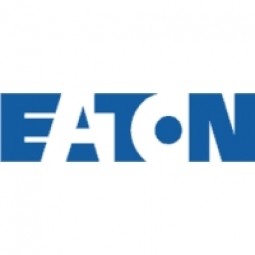
|
Streamlining Agricultural Automation with Eaton’s Package Solution
Grossi Electric, a full-service electrical contracting company, was tasked with facilitating the hulling, dehydrating, and preparation processes at a walnut processing plant in Waterford, California. The company aimed to explore innovative options for creating cleaner and more efficient control panels that would eliminate the intensive time, labor, and costs associated with excessive point-to-point wiring. As a rapidly growing electrical contracting company, Grossi Electric was also concerned about managing risk and cost while attempting to establish a new and unfamiliar service offering in a mature market for control products. The walnut processing plant presented a prime learning opportunity for the company to discover the best way to build more tailored control panels for its customers. The challenge was to enable a lean automation process that was smarter, simpler, more effective, and of unique advantage for clients.
|
|
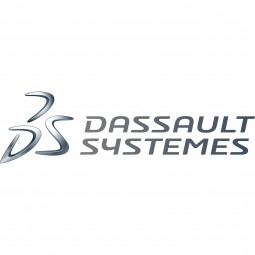
|
ALCAN Systems: Revolutionizing Cellular and Satellite Communication with IoT
ALCAN Systems, a start-up founded in 2016, aimed to create a low-cost smart antenna system for cellular and satellite communication. The company was developing liquid-crystal-based phased-array antennas that allow high-performance electronic beam-steering in a compact, lightweight package. However, the development of these innovative antennas posed significant challenges. Traditional mobile technology used omnidirectional antennas that provided coverage from as many directions as possible. This approach was not suitable for the future of satellite broadband and millimeter-wave 5G. For these technologies to work effectively, the end-user needed a constant line of sight to the satellite, which required a very high directivity and gain to maintain contact without excessive power use. The same was true for 5G, especially at very high frequencies where loss from waves passing through the air and other materials was much higher. ALCAN Systems needed a solution that could overcome these challenges and deliver reliable high-speed data links in challenging environments.
|
|
|
|
Panasonic Rebuilds Its Private Cloud with Tintri
Panasonic System Networks launched a new project to refresh the entire storage infrastructure for the company's cloud platform.
|
|

|
Saving millions by avoiding expensive downtime for hydraulic fracturing equipmen
To extract shale oil and gas, specialized equipment is used to fracture rock via a process called hydraulic fracturing (or “fracking”). To do this efficiently, users must know when their equipment needs maintenance. If the equipment stops working while in the well, millions of dollars are lost due to downtime and logistics. Additionally, our client, a major oilfield equipment company, needed a way to make their product stand out. They wanted to accomplish this by providing oil and gas software solutions but had no idea on how to develop and deliver software in the cloud.
|
|
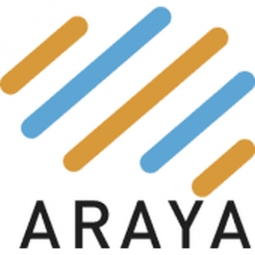
|
Introduction of AI to Quality Inspection of Consumable Raw Material
In the past, it was necessary for inspectors to visually detect minute foreign substances that rarely got mixed in with raw materials (plants) flowing down the production line.The challenges are:1. difficult to detect visually by inspectors - It was necessary for inspectors to visually inspect foreign objects as small as 1mm, which made it difficult to detect them.2. existing inspection devices cannot cope with the problem - In addition to the fact that the foreign matter is microscopic, both the raw material and the foreign matter come in multiple types and colours and have unspecified shapes, so rule-based image inspection systems could not handle them.3. different conditions for each factory and line - The customer has multiple factories and lines, each with different types of foreign matter, different conveyor speeds, and different inspector skills.
|
|
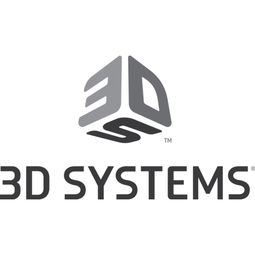
|
High Density Stacking Capability Enhances Productivity in 3D Part Production at Decathlon
Decathlon, the world’s largest sporting goods retailer, was faced with a mold injection problem on a small component for shooting glasses that connects the frame to the lenses. The company was seeking a solution that would avoid the expense of tooling and increase efficiency in production. They decided to test the new 3D stacking solution developed by 3D Systems to evaluate additive manufacturing for production. After conducting a feasibility study on the Figure 4 solution and stacking feature, Decathlon’s teams confirmed the productivity and economics of additive manufacturing and decided that this solution could be considered for batch-run production of the final product.
|
|

|
Accelerating Global Growth with Efficient, Cost-Effective Trading Partner Integration in the Cloud
The Master Lock Company (TMLC), the largest global manufacturer and marketer of padlocks and personal safes, was facing challenges due to its fast-paced global growth. The company was expanding its operations in new markets across Asia, Central America, and Europe, which meant onboarding significant numbers of additional trading partners, each with their own specific local requirements. TMLC’s retail business depended on electronic data interchange (EDI) to effectively communicate with its global base of trading partners. However, with an average of 40 new trading partners to onboard every year, the company’s lean EDI team was approaching its limits. The company was aware that they would soon need to add at least three full-time equivalents (FTEs) to the EDI team just to keep up with the increasing complexity. The challenge was to find a way to manage the rising requirements without driving up costs.
|
|

|
Canadian Energy Firm Started Its Digital Transformation
Seeks to improve operational decision-making, safety management and sustainability.A key element in these initiatives is asset maintenance, representing approximately 25% of Cameco’s overall operating costs at its mining operations. Improving asset management began with automating data collection.Cameco had struggled to analyze multiple regular condition monitoring data from assets in the past. As a result, the company found it hard to understand what went wrong in the event of asset failure.
|
|

|
KeyBank's Digital Transformation with Confluent's Data in Motion
KeyBank, one of the nation's largest bank-based financial services companies, embarked on a national digital bank initiative following the acquisition of Laurel Road, a digital consumer lending business. The initiative aimed to build a digital bank focused on healthcare professionals looking to refinance student loans and buy homes. A significant challenge was reducing the time to market for new products by democratizing data and decoupling systems across the IT landscape. Like many large enterprises, KeyBank had a variety of vendor applications, custom applications, and other systems that were tightly coupled to one another. New projects often required developing specific point-to-point integrations for exchanging data, which did not address the needs of other downstream systems that could benefit from the same data.
|
|
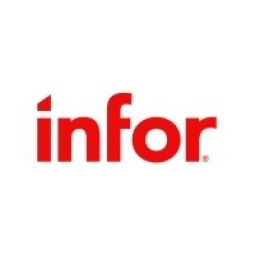
|
Optima Energy Systems Enhances Analytics with Infor Birst
Optima Energy Systems, a leading energy management software provider, was facing challenges with its existing reporting system. The company had built an extensive collection of bespoke reports for its customers, which included large, multi-site organizations like supermarkets, water companies, telecom companies, and universities. However, every new customer required a different report, leading to a messy pile-up of options and settings that became increasingly cumbersome and difficult to support. The original reporting technology was unfamiliar to many, causing Optima Energy Systems to spend a disproportionate amount of time manually building reports rather than focusing on future product enhancements. The company sought to replace its existing reporting capability to improve development efficiency and transform its manual and resource-intensive reporting environment into a customer self-service reporting infrastructure.
|
|
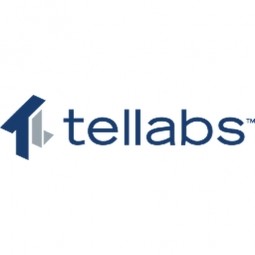
|
ECSI installs Tellabs Optical LAN to Help Kraus-Anderson Building's Network
Kraus-Anderson (K-A) invested in constructing a new 100,000 square foot corporate headquarters in downtown Minneapolis to create a state-of-the-art campus that enabled a modern collaborative work environment, and above all, helped them attract, retain, and develop the best employee talent possible in this progressive metropolitan setting. Kraus-Anderson also knew that this forward-looking 5-story building, and its elite workforce, would demand an equally high-performance and secure network, with ubiquitous accessing through either wired or wireless connectivity.The main saught after feautres were space savings and strict security.
|
|

|
Shifting supply chain economics with Avnet Integrated
Ribbon Communications utilizes outsourced inventory management and integration model. Its customer Service Level Agreements (SLAs) require the company (and its supply chain partners) to have enough inventory on-hand to fulfill customer orders around the globe immediately. This is complicated by the fact that Ribbon Communications offers multiple base platforms of its solution with more than 20 different configurations. Keeping all the necessary inventory to fulfill customer demand on hand would pose a financial and logistical burden for any company.Ribbon Communications has fully virtualized its product portfolio, enabling the company to benefit from the economics of a software-based business model-higher profit margins and fewer inventory risks - and lessen the impact of a capital-intensive, small margin model required in hardware. However, hardware is still an important aspect of the Ribbon Communications solution. Many customers still expect fully engineered systems with support, locked-down bill of materials (BOMs) and firmware management included.Ribbon Communications saw an opportunity to change the way it managed its supply chain operations in a way that benefited its customers and themselves. But it needed the right partner. One that could help it coordinate and integrate the hardware and related service and support requirements of its solutions and take on the economic and supply chain implications that went with them. One that could also assure its customers were getting the same, highly engineered, and high-performance solution Ribbon Communications expected.
|
|
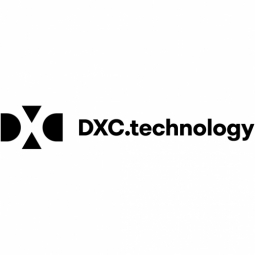
|
Bayernwerk AG's Cloud-Based Integration Platform for Enhanced Services and Reduced Time to Market
Bayernwerk AG, a subsidiary of global energy leader E.ON, operates one of the largest electricity and gas distribution networks in Germany. The company aimed to create innovative business systems to better utilize existing assets and deliver new digital services faster to members and third-party organizations in the energy industry. However, Bayernwerk AG faced significant gaps in its legacy platforms and was challenged with figuring out the best ways to use existing grid services to develop new products and services. The company also aimed to improve the customer experience and the reusability of its assets and software systems. A primary goal of the digital transformation was to change the role of IT to enable business innovation and foster growth.
|
|
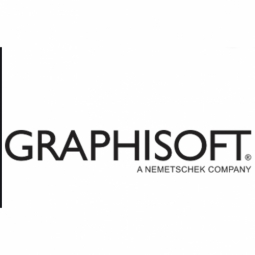
|
BIM Technology for Poniente Residential
The main challenge, apart from meeting the demands of the client, was to create a building that fits two very different realities: one based on an existing urban environment dominated by vehicles, with wide roads and streets, and another based on a non-existent reality, a reality that we would create from scratch. A “domestic” and user-friendly identity, where one could escape from the outside world’s aggressive way of life.Early on that, the scale of the building would be enormous, so large that it led us to think in the same terms of scale when planning the façades of the building and at the same time, it led us to the election of large groups that, in tune with the rest of the building, would lend it harmony and calm.
|
|

|
Beijing Internet Harbour Company with Hitachi Unified Compute Platform Solution
Facing the fierce competitive market, the new system needed to improve customer satisfaction, ensure continuous system operation and curb costs.
|
|
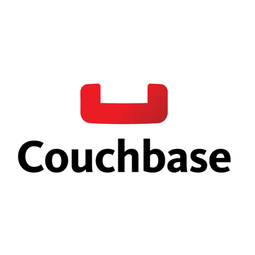
|
GE Digital's Innovative IoT Solution for Industrial Applications with Couchbase
GE Digital's software team developed an innovative solution, the Predix cloud-based platform, to address the challenges posed by the vast amounts of data generated by state-of-the-art machines. Predix allows organizations to build tailored mobile apps that help field personnel collect and analyze data from intelligent machines. However, the initial release of Predix required a data platform that could provide strong stability without relying on internet connectivity. This posed a significant challenge as field workers needed to monitor, maintain, and troubleshoot equipment even in remote locations with limited or no network connectivity.
|
|

|
How ITS ConGlobal Pioneered Fleet Electrification in their Industry
Needed a plan for investing in fleet electrification ITS ConGlobal (ITSC), one of the largest transportation support companies in the U.S., has long believed that it must operate sustainably—especially as the transportation and logistics industry is a leading source of CO2 emissions. Recent legislation aims to reduce greenhouse gasses (GHG) emissions from operations in the private sector. Still, ITSC has consistently invested in sustainable operations and stays well ahead of government-imposed regulations and timelines. In particular, they were interested in switching from diesel to electric vehicles (EVs). EVs are a significant investment of time and resources, especially considering the diverse needs of ITSC’s mixed fleet. They put together a systematic, data-driven plan for electrifying their fleet, starting with a pilot.
|
|
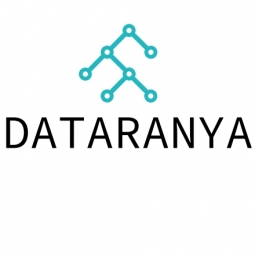
|
Digitalising QC records
Ready-mix concrete batching plant with seasonal demand 6,000 to 12,000 cu.metre per month.Batch-cycle records for each truck is stored in paper format. 1000 to 2000 truck loads per month, generating ~2000 to 6000 paper records.QC anomaly detection in chemical batch-mixing is manual & time consuming.
|
|

|
Gexa Energy and AutoGrid's Innovative Demand Response Programs in ERCOT
Gexa Energy, a leading retail electricity provider in Texas, was seeking to introduce new demand response programs for its commercial and industrial customers in the Electric Reliability Council of Texas (ERCOT) market. The challenge was to provide a platform that would allow these customers to lower their energy bills by adjusting their energy consumption during peak energy demand or high wholesale electricity prices. The solution needed to be intelligent, scalable, and offer both manual and automated options for adjusting energy consumption. The demand response programs needed to include Emergency Response Service (ERS), Real-Time Price Response (RTPR), and 4 Coincident Peak (4CP).
|
|

|
Revolutionizing Aerospace Industry with 3D Printing: A 63% Lighter Titanium Part
GE Aviation, a renowned name in the aerospace industry, recognized the potential of 3D printing technology in transforming the sector. The primary challenge was to reduce the weight of the aerospace parts, which would directly impact the fuel costs. A lighter airplane would mean lower fuel consumption, leading to cost savings and a smaller carbon footprint. However, achieving this weight reduction without compromising the strength and functionality of the parts was a significant challenge. Traditional manufacturing methods were not able to provide the desired weight reduction while maintaining the required stiffness and strength of the parts. The challenge was to find a solution that could create strong, light, and functional aerospace parts.
|
|
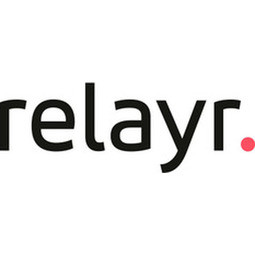
|
Rethinking Machine Performance
Machine uptime is one of the most vital performance factors for electric rotating machinery. In times when an hour of downtime can equate to thousands of dollars in losses, securing predictability turns into a high priority for all industrial businesses. Manufacturers operate in an extremely volatile environment, thus avoiding unplanned downtime becomes critical for achieving desired business outcomes. Predictive maintenance is no longer a nice-to-have but a necessity to survive and thrive in unfavourable conditions. Start from the basics. Making machines perform better means, first and foremost, understanding how the machine works, extracting relevant data, and gaining meaningful insights into ongoing processes. The power of the machine lies in utilizing its full potential.
|
|

|
Wireless Control Smart Switch for Electrical Appliances
The client requirement was to develop an IoT-based device, which can control the on-off of any electrical device at home by using wireless technologies. The device is connected to the internet via Wi-Fi, and access through the smartphone application.
|
|
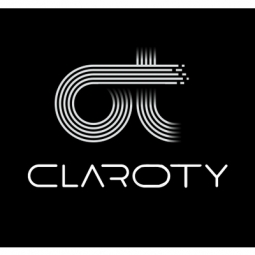
|
Electric Utilities
Effectively securing its generation and transmission operations required the company to confront and overcome the following challenges:Inherently insecure OT networks: Complex and widely distributed architecture, limited OT visibility, and inadequate security controls gave attackers hundreds of possible entry points into the company’s OT networks.OT redundancy: The redundancy of the company’s OT environment meant that attacks were typically only detected if they caused immediate, easily noticeable damage. Heavy reliance on OT remote access: The company’s power plants utilize a large number of unmanned power generation units and also rely on multiple vendors to maintain and service their heat recovery generation systems (HRGS).
|
|

|
Suncor Achieves 95% Reduction in Operator Alarm Load at Fort Hills Oil Sands Mine
Suncor, one of Canada’s largest integrated energy companies, faced a significant challenge at their Fort Hills mine. Upon completion of commissioning in 2018, the control room operators were dealing with alarm loads 30 times higher than those recommended by alarm management standards and best practices. These alarm loads, combined with frequent alarm floods caused by plant upsets, resulted in significant operator overload. This increased the risk of safety, environmental, and production-related incidents at the site. The alarm system was overactive, causing a high level of stress and potential for error among the operators. The challenge was to reduce the alarm load to manageable levels and ensure the safety and efficiency of the operations.
|
|

|
Global Unichip Corporation: Streamlining IC Design with IoT
Global Unichip Corporation (GUC), Taiwan’s sixth largest integrated circuit (IC) design company, faced challenges in managing its intricate supply chain. The company aimed to function as a key design hub integrating IP providers and IC design partners. However, internal processes were disjointed with departments operating in silos and unsynchronized communication between systems. Project status reports were inaccurate due to manual weekly updates. Managing product issues was resource-intensive and problem-solving knowledge was not accumulated or compiled into a database. Furthermore, GUC needed to continually communicate, coordinate, and collaborate with various business partners such as wafer manufacturers, packaging plants, and test plants after each project completion. This necessitated a comprehensive project management integration platform to handle complex internal and external business processes.
|
|

|
Toyota Financial Services Drives Digital Transformation
Toyota Kreditbank's BI team was looking for a new solution to standardize the data model, renew the technical infrastructure and implement a unified methodology for each country to deliver its data in a standard XML format and on a daily basis. The team would then only need to do the sourcing once and reapply for each country.
|
|
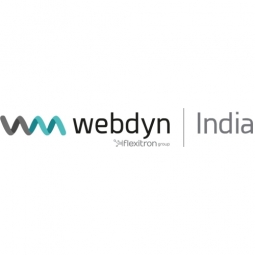
|
LoRaWAN - Helping citizens and organizations to reduce environmental impact
More and more, our world is becoming aware about the environmental print that comes with population growth, limitation of resources, climate change and the need for sustainability. The biggest challange here was to raise awareness among citizens and organizations about their environmental impact, and to help themto reduce it in a sustainable way with the help of Real time data.
|
|
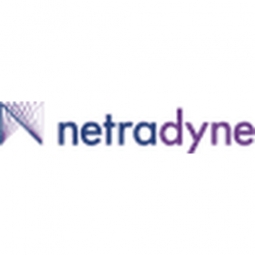
|
Halvor Lines Enhances Driver Safety with Netradyne Driveri®
Halvor Lines, a trucking company with a strong commitment to driver safety, was facing the challenge of protecting their drivers and the company from false claims in an increasingly litigious environment. The company was in search of a video and vision-based recognition safety program that could align with their existing driver safety and recognition strategies. They wanted a solution that would not only strengthen their industry-leading initiatives but also be driver-friendly, helping to develop driver skills and enhance positive safety habits. The solution needed to provide significant value without requiring the inside lens of the truck to be turned on, a feature that could potentially alienate drivers.
|
|

|
Auto-Generating Digital Twins for Enhanced Asset Management Using the C3 AI Platform
One of Europe’s largest manufacturing companies, delivering billions of dollars of industrial equipment globally, faced the challenge of maintaining accurate digital bills of materials (BOMs) for its complex assets. These BOMs, which are crucial for creating asset digital twins for monitoring, diagnosis, and predictive maintenance, were difficult to maintain due to downstream changes in asset configuration not being reflected in engineering drawings. The company was spending over $100 million annually, employing hundreds of technical specialists to manually extract information from various unstructured data sources to create these BOMs. This process was not only costly but also time-consuming, often taking months to create a single digital BOM. The manufacturer was in need of a scalable, automated solution that could perform this parsing and analysis across all its product lines.
|
|

